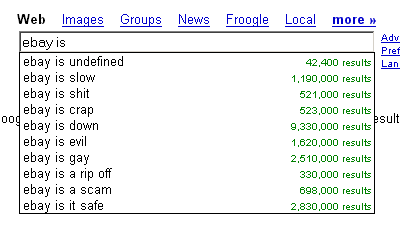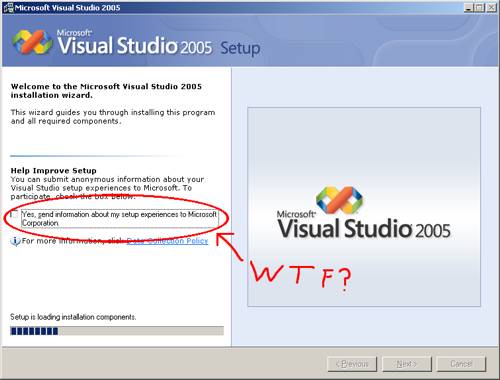How much does entertainment cost? Well, it depends on the medium. A recent interview with Bing Gordon (who has not only a crazy name but also a high ranking position with videogames company Electronic Arts) talks briefly at the end of the article about the comparative cost of different forms of entertainment, and tries to demonstrate that computer games are cheap if you factor in the amount of time they provide entertainment for.
The article’s not terribly interesting unless you’re an undergraduate student wondering how you can join the EA galley when you graduate, but it got me thinking about what we spend on entertainment. Here’s a few thoughts.
I might spend £10-£15 on a good book, and it’ll provide me with, say, 10-20 hours of entertainment, depending on the number of words and the re-readability of the story. I’ll frequently
spend more than this on non-fiction books, but I’ll disregard them as entertainment for the time being (despite the fact that I’m frequently caught enjoying a good reference volume in
the bath), because most normal people don’t read these for fun. So that’s 50p to £1.50 per hour of entertainment, on average – and I’ll frequently buy books that are cheaper than this.
Books are also great in that I can hand them on to friends or family, which doubles or triples the value if we’re counting “person-hours”. Some of my favourite books, such as Imajica and Zen and the Art of Motorcycle Maintenance, which I have read multiple
times and passed on to friends to read too, have values like 10p/hour or less. That’s pretty good value as far as entertainment goes.
Sometimes I rent DVDs (typically, only where it’s more convenient to do so than to download the film, and, sadly, it’s currently easier to download pirated versions of films
than legitimate ones, so they win, but I look forward to being able to rent films online in a sensible manner). A DVD rental costs me about £3. If it were about an hour and a half long
and I watched it alone, that’d give me a value of about £2/hour, but films not only have the advantage of being able to share them with friends, but they can be shared
simultaneously with friends (try this with books and you’ll quickly get frustrated, particularly if you have an uncommonly fast or slow reading speed). If I watch a £3 DVD or
(shocker) videotape rental with three friends, that’s a value of about 50p per person-hour. Pretty good value.
Buying films isn’t such good value, because at about £15 or so each you’d have to watch each one five times to get the equivalent value as if you’d rented it. Plus, you’re likely to rent the film (or see it at the cinema, which has only slightly greater cost than renting it) before buying it, which is a cost that counts against you because if you’d bought it in the first place you wouldn’t have needed to pay to rent it: so; assume I rent a DVD (£3), like it, and buy it (£15): I’ve then got to watch it a further five times before it becomes worth the same as re-renting it. Plus, buying a film puts you at risk of the disc becoming scratched (or the tape worn out), nullifying the value of your purchase. You have to particularly like a film to be worth buying it at retail prices: that, or be willing to sacrifice the money for the convenience of having the film always available at a moment’s notice, or really want the special features you don’t get on the rental copy.
Now let’s have a look at computer games. Computer games are a complicated beast, because their value on this (very simplistic, I know) scale is so hard to assess. I bought a copy of Civilization IV and I’ve probably played it for about 40 hours: at £25, that’s about 60p per person-hour so far, not counting the time that Claire has spent playing it, and based on my enjoyment of it’s prequels I anticipate I’ll have gotten it as low as about 4p per person-hour before I get sufficiently bored of it to put it away forever. But on the other hand, there’s a huge difference between NetHack, which is free, and has consumed well over 100 hours of my life, and Myst 4, for which I paid £35 and which has taken no more than about 6 hours of my time (that’s almost £6 per person-hour: unbelievably bad value).
Not only is the value by straight “person-hours” of videogames very variable, but they suffer from another complication: the loss, in the majority of cases, of the benefits of the social element. Books are high-value because they’re cheap and you can lend them to your friends. Films are medium-to-high value because they’re cheap to rent, you can try them out (by renting them) before you commit to buying them, and because you can watch them with a whole roomful of friends (although if there’s more than nine of you, or money changes hands, it might be considered a “public screening” and is illegal). But computer games are complex again: Civilization IV is a multiplayer-capable game, for example, and I can play it with anybody in the world, but if I want to play it with my girlfriend at the other end of the room, I have to buy another copy of the game. I can play with her on the same computer, but because the game has a copy-protection mechanism that requires that the CD is in the drive to play (and for no other purpose than this – all the data is on the hard disk), I’m restricted from playing across my local network. Well, until I install a No-CD crack or duplicate the disc, but you see my point.
Several of the early games in the Command & Conquer series came with two CDs, and allowed two players to play together from the same copy (if you wanted more players, you had to buy more copies). That seemed fair. The original Command & Conquer cost me under £20 and ate most of my life during the last few years of high school: the value is immeasurably high. But so many computer games these days are so expensive and the risk that you’ll pick up a crap one is high. Combine that with the fact that nobody does rentals of PC games, and you’ve got a great explanation of why the piracy rate is so high. I’d far rather download a copy of Latest Game 2: The Revenge and play it, and, if I like it, buy a copy. So that’s what I do. Only the companies who make crap games lose out, but all of the companies try to make it difficult for me. What’s up with that?
An interesting side effect of this approach is that I am more likely to pay for a game with no copy protection or weak copy protection than I am to pay for a game with strong copy protection (or shitty crippleware-laden copy protection like StarForce), simply because I’m less likely to have downloaded and played it already.
Wow; that was a fair meander from my original point.





















